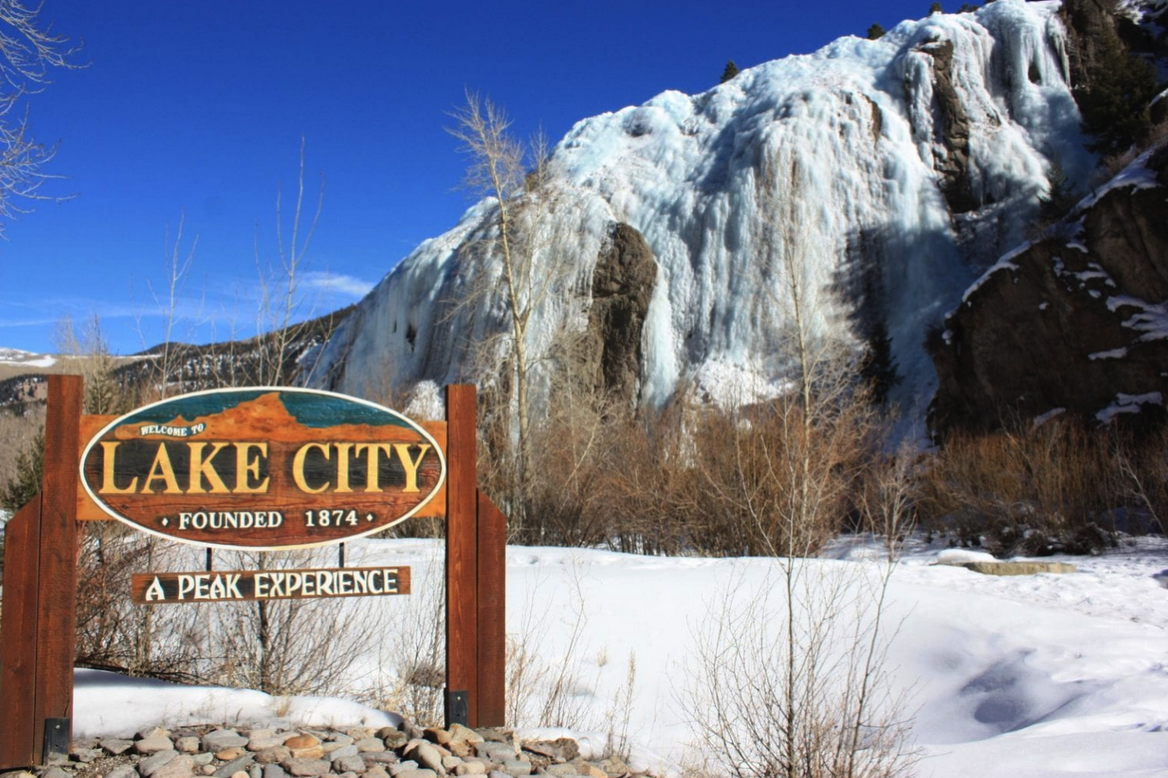
During the last 20 years of the 20th century, I lived in a small mountain town in the San Juan mountains of southwestern Colorado. I’ve yet to find a more magnificent mountain range. Living in this town, which had a year-round population of 125 when I arrived, and now boasts 416, was by turns difficult, splendid and bewildering. Many of us who lived there in the 1980’s-90’s believe that period to be one of the best times to have lived there. Most of my Lake City friends have since moved on, many others have died. Why was it so good? Perhaps because private investors were supporting a much needed rebuild of the historic downtown area, saving buildings from ruin and keeping dozens of master carpenters employed. Those same investors pooled their wits and resources and revived the Merchant and Miner’s bank – a bank was something the town needed yet hadn’t had for many years. Now I’m getting to the point of this post.
In the early 90’s the bank hired Carolyn Hull for a loan officer position and it is in her memory I write this post. Carolyn was a writer, mother and good friend, not only to me, but to the community. Spurred on by a generous and creative spirit, she hosted writing retreats and arranged for other contemporary writers to visit our town. She arranged potlucks and gatherings that helped break the monotony of winter. If you’ve never lived in a small, remote town, where winters are dark, cold and long, you may not know how welcome this sort of energy can be. Over the years I asked permission to use four of her texts for my own Ravenpress projects and she of course readily agreed.
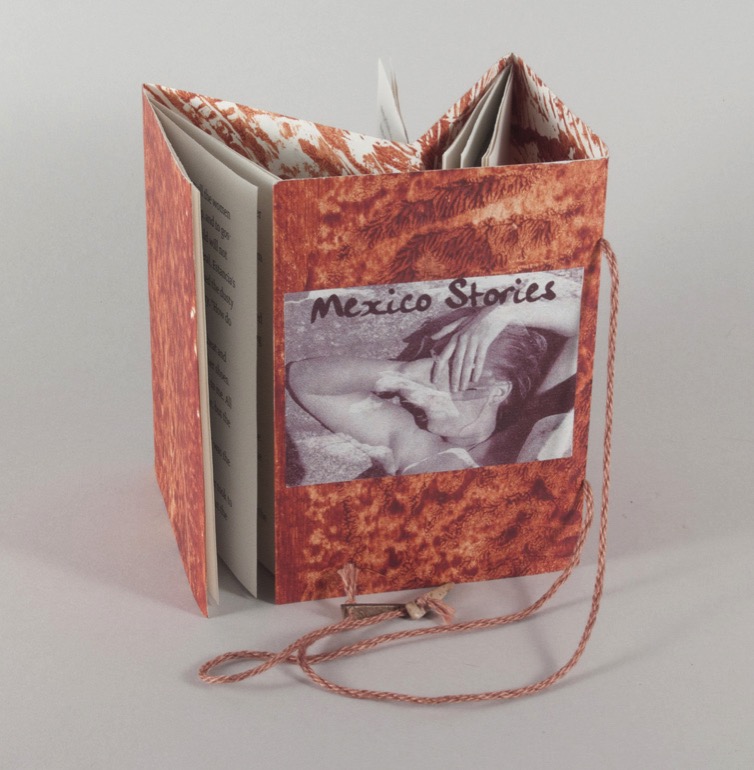
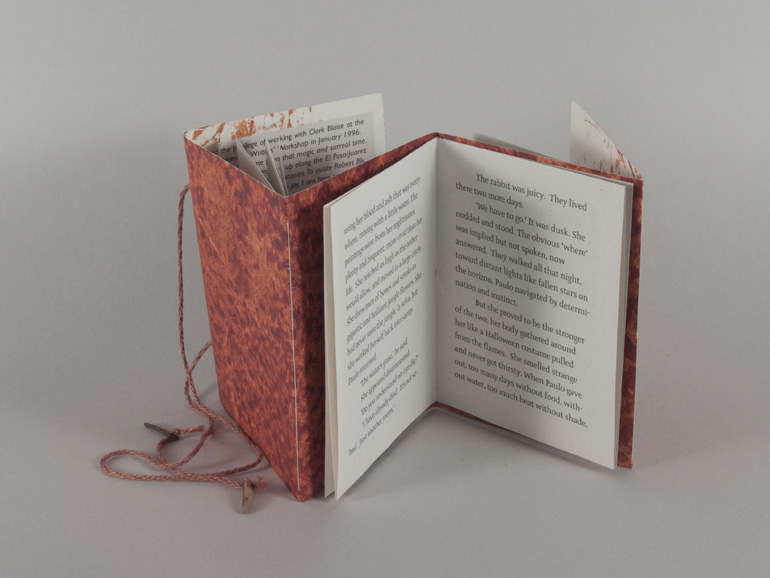
Mexico Stories, produced in 1997, was the first (and only) limited edition I to produced in a sizable quantity (100!). With few resources other than old school digital, I tipped in photographs I’d taken and printed on washi paper using an inkjet printer. To present the three stories as distinct but unified I chose what I call a ‘dos-a-dos-a-dos’ binding – back to back to back. The covers are a rich terra cotta paste paper, with hand-dyed cotton cords with coconut shell beads attached.
1997 was also the year I learned about the popularity of miniature books. In the US a miniature is any book measuring less than 3 inches in all dimensions, in the UK the standard is 4 inches. I started producing limited edition artists’ books and, insecure about my own writing skills, always used the writings of others. This was a savvy move as working in miniature hones hand and ‘eyeballing’ skills and precision. There is the additional benefit of miniatures being very easy to sell.
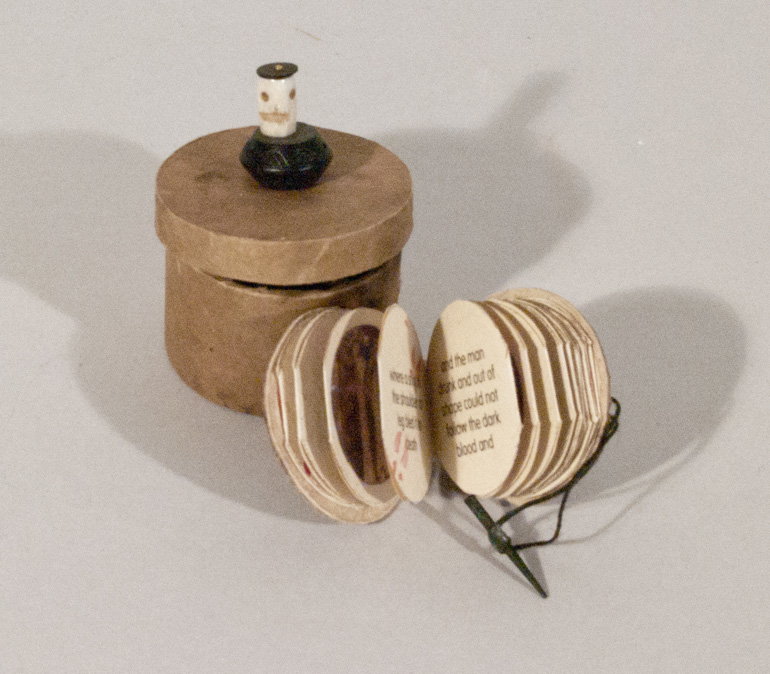
My next Carolyn Hull book I called O of October. It’s a round, accordion miniature housed in a round box, in an edition of 20. This one was based on a poem by Carolyn called October is a Month of Bones (anyone who has lived during hunting season in a mountain town will understand the reference is to hunting season, not Halloween). Adorned with a small, hand carved skull bone on the lid, this was indeed easy to sell to minature collectors. It is out of print.
Lovely as it is to have a ready made market for works based entirely on size, I wanted to push the envelope a little and see how work that had more difficult content fared with collectors. This I did with a poem Carolyn wrote a poem Hunting the Burn. Her words explore the similarities between the moment of firing a gun at a live target and the moment of orgasm, that moves beyond this simple comparison to explore a variety of experience.
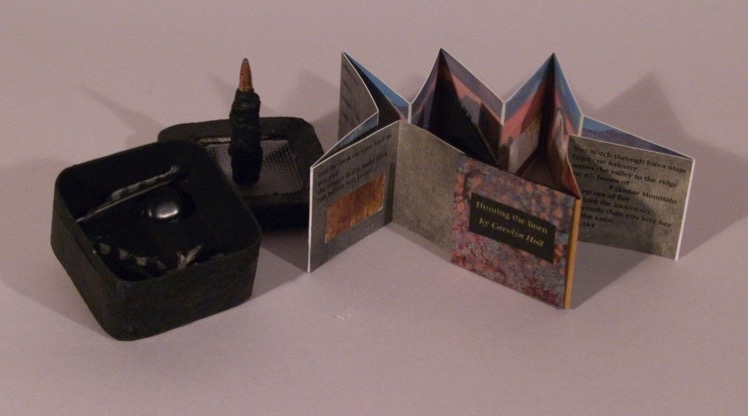
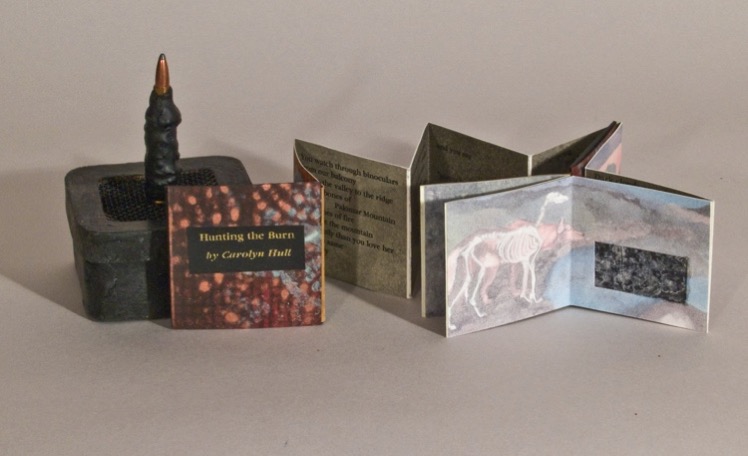
Using her text I produced Hunting the Burn, in an edition of 20. Again relying on paste paper and digital printing, for this one I added stencil patterning, utilized window cut outs and housed the book in an elaborate paper mache box, with a live shotgun shell mounted on the top. This early example of creating a very specific habitat to house my books continues to this day. Whether due to content or the difficulty storing such an awkward box, this wasn’t an immediate sell out. As of this writing there are 3 copies available for purchase (contact me for details).
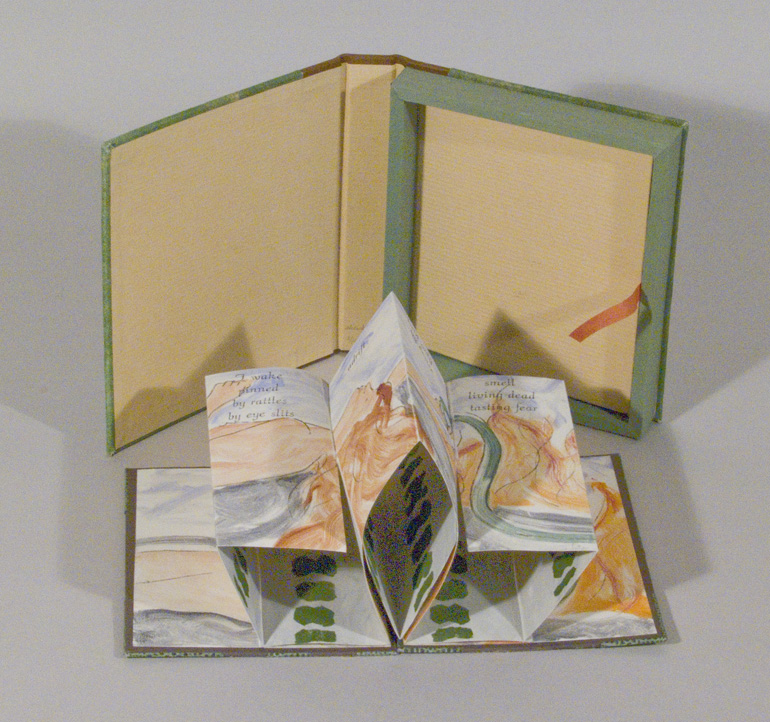
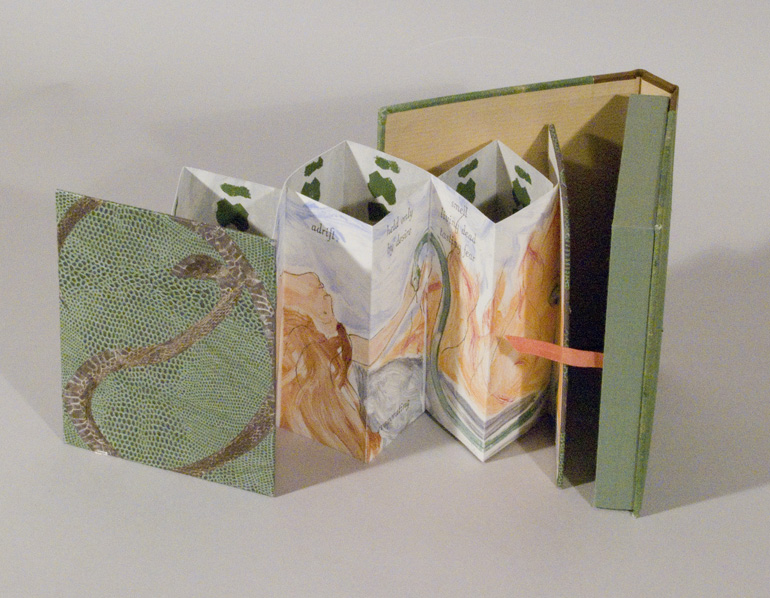
My last project using Carolyn’s writing was Anguine, produced in 2001 in an addition of 14. Weary of miniatures, by this time I’d switched to larger format books, and also relied less on digital printing. Anguine relates what could be a memory, or perhaps a dream, of a titillating experience under a southwestern sky. Again in a custom box, the covers include onlays of snakeskin sheds. The imagery was produced with mono printing techniques, the text is laser toner transfer. There are still a couple of copies of this book available at the moment.
Next week I will be returning to Lake City, the town where I feel like I grew up, even though I moved there when I was 22. I don’t visit there much these days – the mountains remain magnificent but I have little in common with the current demographics of the town’s rotating population. It is always a bittersweet to visit. Next week’s visit is sure to be more bitter than sweet as I’m going to attend Carolyn’s memorial toast.